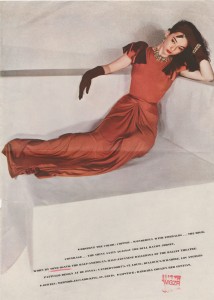 The musical On the Town in 1944 featured a diverse cast that featured six African Americans and a Japanese American ballerina, Sono Osato.
The musical On the Town in 1944 featured a diverse cast that featured six African Americans and a Japanese American ballerina, Sono Osato.
As OUP points out, the production highlighted the unique relationship between African Americans and Japanese Americans at the time.
Surveys taken by the US Office of War Information during WWII found that African Americans felt an ambivalent affinity with the Nisei due to their shared experience with discrimination.
When asked if they would be better off with the US or the Axis winning the war, most blacks said they “would be treated either the same or better under Japanese rule.”
Yet the sight of Osato on stage dancing with white sailors was hard for some African Americans to accept.
African American sociologist Horace R. Cayton, Jr attended On the Town in 1944 and wrote in 1965 in his memoir Long Old Road, about a conversation he had with his white wife about the play back then.
“If I were half-Japanese I wouldn’t be dancing with three American sailors at a time like this,” he recalled saying.
“Why shouldn’t she? She’s as America as you or I.” his wife replied. “She was born in this country. She’s one hundred per cent American, doesn’t even understand Japanese.”
‘She’s a Jap, I’m a nigger, and you’re a white girl. Let none of us forget what we are.”
You can read more about the unique relationship between blacks and the Nisei in OUP.

